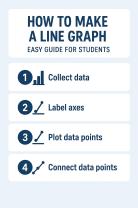How many courses can I register for a bursary?
The number of courses you can register for with a bursary depends on the specific bursary program’s rules and the institution offering it. There is no universal limit; it varies widely based on:
Bursary type and funding source: Some bursaries cover just one course or semester, others may fund an entire program.
Institution policies: Colleges or universities may have limits on how many courses a bursary can apply to.
Program duration: Some bursaries are awarded per academic year, so you might register for multiple courses within that period.
Bursary conditions: Some require full-time enrollment, others allow part-time.
Typical scenarios:
Full bursary: Covers tuition for a full academic year or entire program, allowing you to register for the normal course load.
Partial bursary: May cover only one or a few courses.
Specific bursary: Might fund only certain courses related to a field of study.
What to do:
Check your bursary award letter or agreement for details.
Contact your school’s financial aid office for clarification on limits.
Review bursary terms on the official website or application documents.
Navigating Bursaries and Course Loads: A Comprehensive Guide
Bursaries are a vital form of financial aid for many students, often awarded based on financial need.
How Many Courses Are Typically Allowed Under a Bursary?
While there isn't a universal number, most bursaries are tied to a student's enrollment status, primarily "full-time" or "part-time."
Full-time enrollment is generally defined by institutions as taking a minimum number of credit hours per term, often 12 credit hours or more, which typically translates to 4 to 5 courses per semester.
Many bursaries require students to maintain full-time status to receive the full award. Part-time enrollment usually involves taking fewer than 12 credit hours.
Some bursaries may be available for part-time students, but the award amount is often proportionally reduced.
It's important to note that some programs, especially those with co-op or internship components, might have different definitions of full-time study that still qualify for bursary support.
Do Bursary Limits Vary by Institution or Program?
Absolutely. Bursary limits and eligibility criteria can vary significantly based on:
The Funding Source: Bursaries can come from various sources, including:
Institutional Bursaries: Awarded directly by the university or college, with rules set by that institution.
Government Bursaries/Grants: Such as the Federal Pell Grant in the U.S. or provincial student aid programs in Canada (e.g., OSAP in Ontario). These have their own federal or provincial guidelines.
Private Organizations/Donors: These often have specific criteria set by the organization or individual providing the funds.
Institution-Specific Policies: Each university or college will have its own policies regarding minimum credit hours for full-time status, satisfactory academic progress, and how these relate to financial aid.
Program of Study: Certain programs might have unique course load requirements or academic progression expectations that influence bursary eligibility. For example, a five-year degree program might have different credit completion requirements than a four-year program.
Student-Specific Factors: Your individual Student Aid Index (SAI) or assessed financial need, as determined by financial aid applications (like the FAFSA), will directly impact the amount of aid you receive, including bursaries.
Other aid received (e.g., scholarships) can also affect the final bursary amount.
Therefore, it's crucial for students to consult their institution's financial aid office and review the specific terms and conditions of each bursary they receive.
Can You Register for Extra Courses with Special Approval?
Generally, registering for "extra" courses beyond the standard full-time load (often 15-17 credits) might be possible, but it usually comes with specific considerations and potential impacts on bursaries:
Academic Overload Policies: Most institutions have policies for academic overload, allowing students to take more than the typical maximum credit hours per term. This often requires special approval from an academic advisor or dean, especially if the student's GPA is below a certain threshold.
Bursary Funding for Overload: While you might be allowed to take extra courses, institutional bursaries typically do not provide additional funding for these overload credits. Your bursary award is usually based on the standard full-time tuition rate, regardless of how many credits you take beyond that minimum.
Impact on Academic Progress: Taking on an excessive course load can impact your academic performance. If your grades suffer, it could jeopardize your "satisfactory academic progress" (SAP), which is a common requirement for maintaining bursary eligibility.
Tuition Charges: Be aware that exceeding a certain credit threshold may result in additional tuition charges beyond the flat full-time rate. Bursaries generally do not cover these extra charges.
It's always best to discuss any plans for an increased course load with both your academic advisor and the financial aid office to understand the academic and financial implications.
How Do Course Load Limits Affect Bursary Eligibility?
Course load limits are fundamental to bursary eligibility. Here's how they typically affect your award:
Minimum Enrollment for Eligibility: Most bursaries require a minimum course load to qualify. For full-time bursaries, dropping below the required credit hours (e.g., 12 credits) will almost certainly result in a reduction or complete loss of the bursary for that term.
Proportional Adjustments: If a bursary allows for part-time enrollment, the award amount is often prorated based on the number of credits taken. For example, if a full-time bursary is $1,000 and you enroll half-time (e.g., 6 credits instead of 12), you might only receive $500.
Satisfactory Academic Progress (SAP): Bursaries often have SAP requirements, which include not only maintaining a minimum GPA but also successfully completing a certain percentage of attempted courses. If your course load drops too low, or if you frequently withdraw from courses, it can negatively impact your SAP and future bursary eligibility.
Lifetime Limits: Some bursaries, particularly government grants, have lifetime limits on the number of terms or credit hours for which a student can receive funding. Not adhering to course load requirements could lead to exhausting these limits prematurely.
What Happens If You Drop Courses While on a Bursary?
Dropping courses while receiving a bursary can have significant financial consequences:
Bursary Recalculation and Repayment: If you drop courses, especially early in the term (e.g., within the first few weeks), your enrollment status may change. This often triggers a recalculation of your financial aid, including bursaries.
If the recalculated award is less than what you've already received, you may be required to repay a portion of the bursary funds to the institution or the funding body. Impact on Future Eligibility:
Satisfactory Academic Progress (SAP): Dropping courses can affect your completion rate, which is a key component of SAP.
Failing to meet SAP standards can lead to a loss of eligibility for future financial aid, including bursaries. Scholarship-Specific Requirements: Many scholarships (which are often grouped with bursaries in financial aid discussions) have strict credit hour requirements for renewal.
Dropping below these limits can make you ineligible for renewal in subsequent terms.
Loan Implications: If you also have student loans, dropping below half-time enrollment can trigger the start of your loan repayment grace period, meaning you'll have to start paying back your loans sooner.
Tuition Refunds: While you might receive a tuition refund for dropped courses, this refund is often applied first to any financial aid you owe back before any remaining amount is returned to you.
Before dropping any courses, it is highly recommended to consult with your academic advisor to understand the academic implications and, most importantly, with your university's financial aid office to understand the precise impact on your bursary and other financial aid. They can provide a clear picture of any potential repayment obligations or future eligibility issues.













